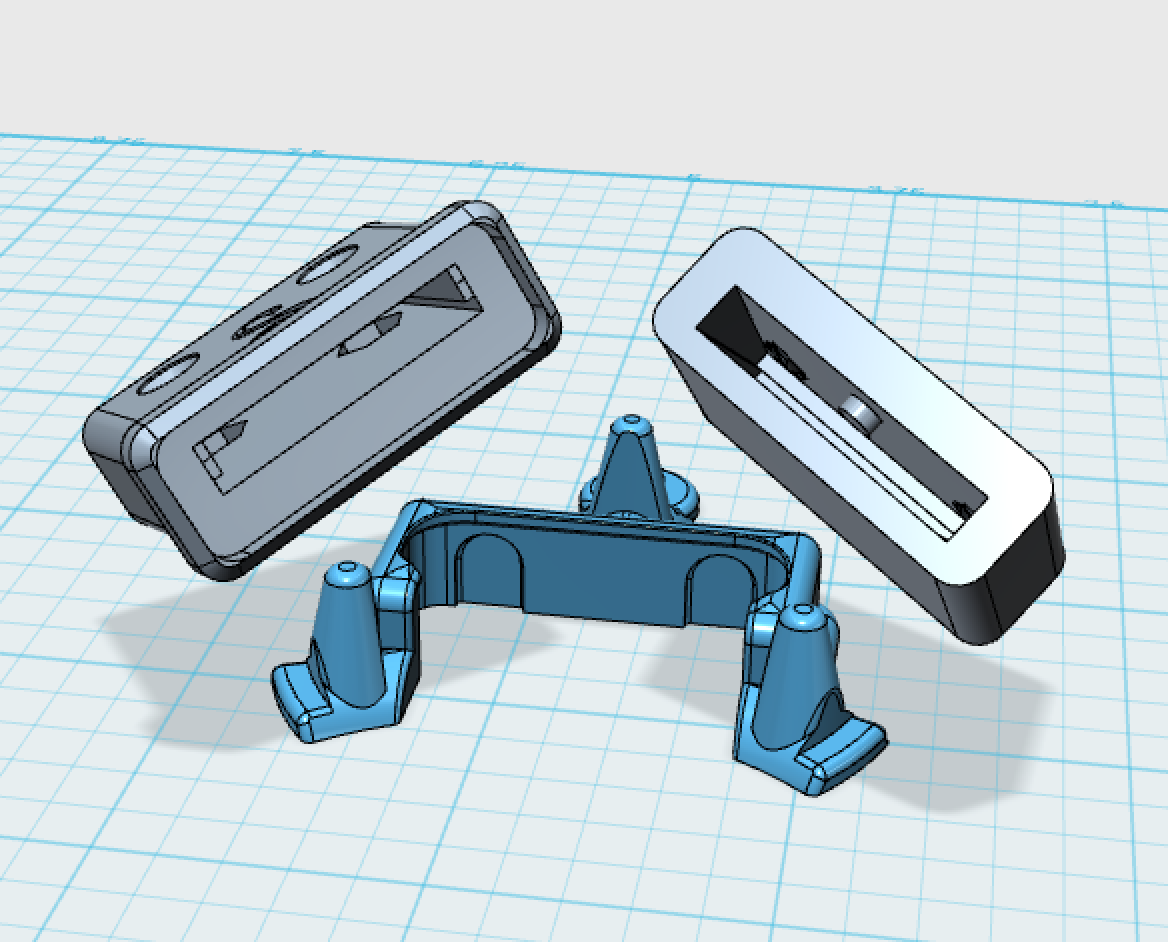Why I Make Colloidal Silver Machines ~ Conclusion
"You can only become truly accomplished at something you love. Don’t make money your goal. Instead pursue the things you love doing and then do them so well that people can’t take their eyes off of you."
- Maya Angelou -
In the first part of this story,
I told you how I learned about colloidal silver and what pushed me over the edge to try it for the first time myself.
Today I hope to finish the tale by explaining how I learned to make my own colloidal silver, and why—after a couple of decades of using it to deal with a wide variety of ailments—I decided to create a machine that could make it completely automatically.
My First Bottle of Colloidal Silver - Original image by @creatr
I was thrilled that silver knocked out my sinus infections,
but before long, I had used up my little bottle.
I've always been a do it yourself kind of guy, so I thought "I'll bet someone out there on the internet knows how to make this stuff."
Sure enough, I came across an article by Mark Metcalf titled "Banishing disease with three 9-volt Batteries". Metcalf's article described how to build a device to make colloidal silver. His simple design used batteries, wire, a small bulb, alligator clips, and two five-inch pieces of .999 fine silver wire.
I was really happy to learn how to make it.
Now I could deal with my sinus issues whenever they occurred. Over the years, I've also used silver for everything from cuts and scratches to a sting ray wound to the worst surfing injury I ever experienced.
I also made a variety of simple generators so that friends and family could make their own colloidal silver. Rather than using consumable batteries, I built devices that used wall-wart power supplies.
There were many bumps in the road.
All too often, I would start the process, walk away, and forget about it, only to come back much later and discover a forest of silver oxide had built up around one of the silver rods. This eventually led me to use a timer to avoid that "run-away" problem.
Use Only Distilled Water - Original image by @creatr
Over time,
I discovered that Metcalf had promoted some bad practices. For example, he suggested adding saline solution to the process, and using spring water. I learned to never use anything but thoroughly distilled water, in order to avoid producing undesirable compounds like silver nitrate and silver chloride.
I discovered the importance of current control.
To produce high quality colloidal silver with an effective, small particle size, I learned that it is important to maintain a very low current density at the interface between the silver source and the water.
Why did I design the SILVERengines proton?
I was getting tired of having to "mother-hen" the process when I made colloidal silver. I kept thinking about ways to take the worry and bother out of the process, and to insure safe and consistent results.
I also was concerned about the pervasive misinformation. Unfortunately, Metcalf's original articles are not the only source of bad methodology on the internet. I knew that many home brewers were having ineffective results, or worse yet, producing solutions containing potentially harmful byproducts.
I wanted the average person to be able to make high quality colloidal silver at home without worrying about the details of "getting it right." These are the things that motivated me to develop the SILVERengines proton design.
Sophisticated Electronic Circuit Design - Original image by @creatr
I knew we needed an intelligent machine.
The electrical and software design had to perform the following without user intervention:
- Test the water to be sure it is distilled (Can you tell by looking?)
- Refuse to process the water if it is not distilled
- Indicate that silver infusion is in process
- Constantly measure the amount of silver in the water
- Alternate the direction of current flow between silver rods
- Steadily reduce the voltage to maintain a low, even current flow
- Turn off all current flow when the target silver concentration is reached
- Positively indicate process completion to the user
I was able to achieve all these goals with an innovative circuit design wrapped in a sturdy, compact, 3D-printed case. Once you understand the fundamentals clearly, it takes less than a minute to set up a proton and start a batch processing. Then you can walk away and forget it; everything else is fully automatic. In about four hours, you'll have 16 ounces of high quality 10ppm colloidal silver, comparable to store-bought Sovereign Silver.
Highly Detailed, 3D Printed Case - Original image by @creatr
It took several design iterations,
but I finally arrive at the current sophisticated computerized circuit now in every proton.
The proton's sophisticated circuit board accepts standard micro USB power. Its microcomputer manages the colloidal silver making process. A charge pump boosts the 5 volt USB input to 27 volts to diffuse silver ions (Ag+) into distilled water while an operational amplifier regulates output voltage and periodically alternates the direction of current flow. A multi-color LED indicates the state of the process.
I'm glad I created this product.
My own protons give me a limitless supply of what I consider nature's finest antibiotic. Among the thousands of proton users worldwide, many have expressed their gratitude for the benefit it provides. You can read a collection of those reports at http://SILVERengines.com.
My Whaleshares blog focuses on the Maker Movement. In coming days, I hope to describe details of how I created this design and how I leverage modern CAD tools and 3D printing to enable a distributed fabrication process.
Stay tuned, and feel free to discuss anything with me in comments below.
~FIN~
The Brains of the SILVERengines proton - Courtesy of SILVERengines.com
Thanks for visiting our (usually) Maker-themed blog.
Important Note: My articles often contain hot links to supplemental information. While they aren't essential, you may find added value by following them. Most images also link to useful or related information or articles.
As a member of the Whaleshares community, I promise to take your comments, both positive and corrective, very seriously.
I'm especially interested in meeting makers. If you make stuff, I would love to read about it and encourage you in any way that I can... Just say "Hi" in a comment, and show me what you're working on; I welcome your links!
Thanks to @beherenow for this lovely #thebeast banner!
Your opinion is celebrated and welcomed, not banned or censored!







